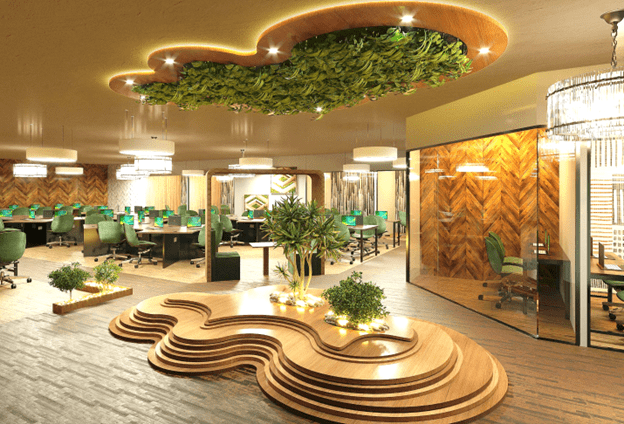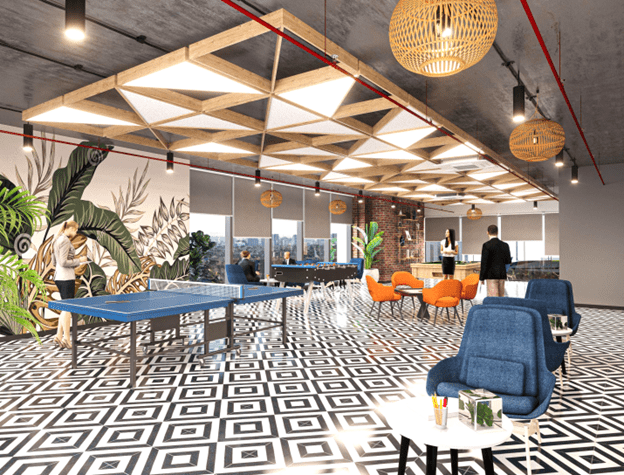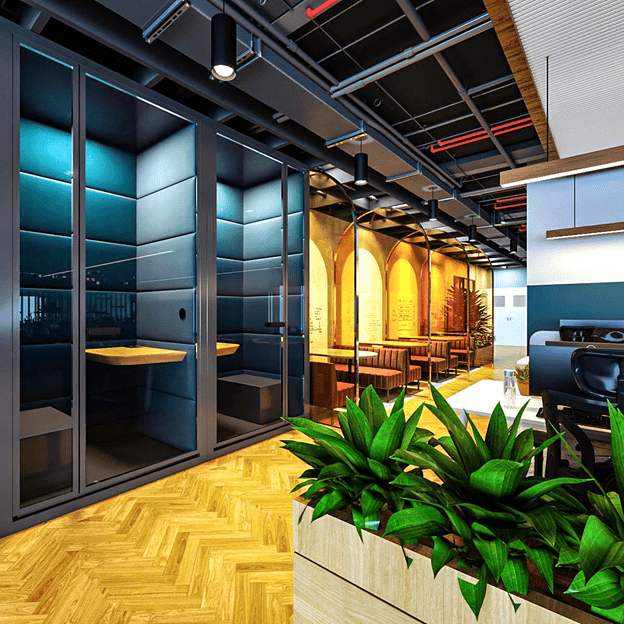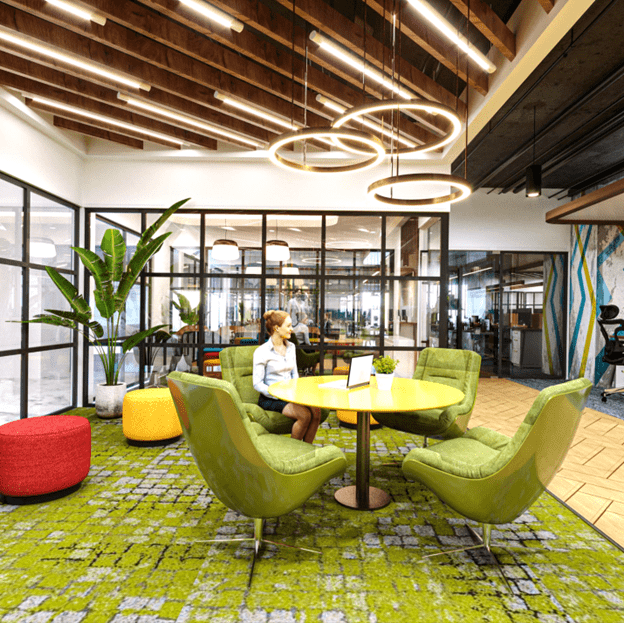By Kunal Sharma
In today’s fast-paced and high-stress work environments, the mental health of employees has gained increasing attention. Employers are no longer solely focused on physical health but are also recognizing the importance of promoting mental well-being in the workplace. One key factor that plays a significant role in this regard is the design of the commercial interior space. A well-designed workplace can have a positive impact on the mental health of the workforce, improving productivity and overall job satisfaction.
The Influence of Design on Mental Health
1. Natural Light and Biophilic Design
Integrating natural elements into the workplace can have a profound effect on mental health. Natural light has been proven to boost mood and energy levels, reducing feelings of depression and anxiety. Interior designers should aim to maximize access to natural light by incorporating large windows, skylights, and lightwells in their designs. In addition, incorporating elements of biophilic design, such as indoor plants and green walls, can improve air quality and create a calming and relaxing atmosphere.

2. Ergonomic Furniture and Layout
The physical comfort of employees directly impacts their mental well-being. Interior designers should consider incorporating ergonomic furniture that promotes good posture and reduces the risk of musculoskeletal disorders. In addition, the layout of the space should be carefully planned to allow for easy movement and reduce clutter, creating a sense of calm and order.

3. Color Psychology
Colors have a significant impact on our emotions and can influence our mental state. Interior designers should consider using colors that promote positive feelings and reduce stress. For example, using shades of blue or green can create a soothing and calming effect, while pops of vibrant colors like yellow or orange can enhance creativity and stimulate the mind.

4. Acoustics and Noise Control
Noise pollution can be a major source of stress in the workplace. Interior designers should incorporate acoustic materials and innovative solutions to minimize noise levels. Soundproofing walls, using acoustic panels, and providing private spaces for concentration can greatly contribute to reducing distractions and improving mental focus.

5. Multi-functional Spaces and Breakout Areas
Designers should create versatile spaces that allow employees to switch between different modes of work. Providing breakout areas and communal spaces for relaxation, collaboration, and socialization can help improve mental well-being and foster a sense of community among employees.

Tips for Interior Designers
When working on commercial projects, interior designers should keep in mind the following tips in order to create spaces that prioritize employees’ mental health:
1. Collaborate with Clients
Communication and collaboration with clients are key in understanding their specific needs and goals. Creating a space that aligns with the values and culture of the organization is essential for enhancing the mental well-being of the workforce.
2. Conduct Research
Interior designers should stay up-to-date with the latest research and trends in workplace design and mental health. Understanding the psychological impact of design choices will enable them to make informed decisions and create spaces that prioritize mental well-being.
3. Prioritize Flexibility
Designing spaces that are adaptable and flexible is important in today’s dynamic work environments. Employees should have the ability to personalize their workspace and have access to areas that cater to different working styles and preferences.
4. Incorporate Access to Nature
Integrating elements of nature, such as plants or natural materials, can have a positive impact on mental health. Interior designers should incorporate biophilic design principles to bring the benefits of nature into the workplace.
5. Consider Well-being Programs
Designers should work closely with clients to explore the possibility of incorporating wellness programs within the design. This could include features like meditation rooms, fitness facilities, or areas designated for mindfulness practices.
Conclusion
In conclusion, a well-designed commercial interior space can significantly contribute to the mental health and well-being of the workforce. Interior designers have a crucial role to play in creating environments that promote productivity, reduce stress, and foster a positive work culture. By incorporating elements such as natural light, ergonomic furniture, appropriate color schemes, and focus on acoustics, designers can create spaces that prioritize mental well-being and enhance overall job satisfaction for employees. It is important for interior designers to stay informed, collaborate with clients, and incorporate the principles of biophilic design and flexibility to create commercial spaces that support the mental health of the workforce.
(The author is Kunal Sharma, Founder & CEO- Flipspaces, and the views expressed in this article are his own)






